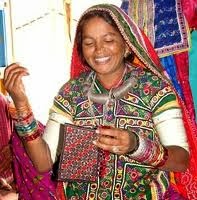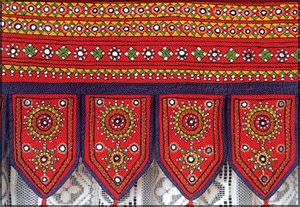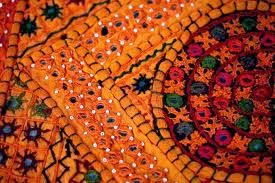ॐ श्री गुरुभ्यो नमः ॐ श्री शिवानन्दाय नमः ॐ श्री चिदानन्दाय नमः
Source of all Images in this Blog-post : Google Images : ‘Google Image Search’ will reveal the multiple sources of every single image shared in this Blog. For more details, kindly see ‘Disclaimer‘
Introduction
Kutch, a district in the western Indian state of Gujarat, is renowned for its rich cultural tapestry, and the Rabari tribe is one of its jewels. Among their many artistic traditions, the Rabari hand embroidery stands out as a stunning testament to their creativity and craftsmanship. This article will delve into the captivating world of Rabari hand embroidery, exploring its history, techniques, and significance.
A Glimpse into Rabari Culture
The Rabari tribe, also known as the Rewari or Raika, is a nomadic community with a distinctive way of life. They primarily inhabit the arid and desolate regions of Kutch and neighboring Rajasthan. Historically, they have been known for their cattle-rearing, particularly the breeding of camels, and their deep connection to their animals is reflected in their art.
Rabari Hand Embroidery: A Traditional Craft
Rabari hand embroidery, locally known as ‘Rabari Bharat,’ is an integral part of the tribe’s cultural heritage. It is not merely a craft; it is a reflection of their identity, history, and spiritual beliefs. Rabari women, who are the torchbearers of this tradition, spend hours creating intricate designs, often working in groups. These embroideries can be found on various textiles, including clothing, shawls, bags, and wall hangings.
The Technique
Rabari embroidery is characterized by its intricate and labor-intensive stitches. Some of the common stitches used in Rabari embroidery are:
- Aari Work: Aari work involves using a long, hooked needle (aari) to create fine chain stitches. This technique allows the embroiderer to create complex patterns with great precision.
- Mirror Work: Mirrors, often circular or square in shape, are incorporated into the embroidery. These mirrors, known as “abhala,” are surrounded by colorful thread work, adding a dazzling sparkle to the fabric.
- Patchwork: Rabari women also use patchwork to create designs. They piece together various fabric remnants and then embellish them with intricate embroidery.
- Kantha Stitch: A running stitch, known as the kantha stitch, is sometimes used to fill in larger areas of the fabric with colorful threads.
The Symbolism
Rabari embroidery is not just about aesthetics; it is laden with symbolism and tradition. Each design holds specific meanings and can tell a story. Some common motifs include:
- Peacocks: The peacock is a symbol of protection and is often seen on the back of Rabari women’s blouses.
- Elephants: Elephants are associated with strength and are stitched onto the garments to protect the wearer from negative energies.
- Trees: Trees are a symbol of fertility and are often depicted with birds perched on the branches.
Significance in Daily Life
Rabari embroidery plays a crucial role in the life of Rabari women. They use it to adorn their own clothing, which is not only a form of self-expression but also a way to protect themselves from evil spirits. Furthermore, these embroidered textiles are often exchanged as gifts during weddings, births, and other significant life events, reinforcing the deep cultural significance of this art form.
Preservation and Revival
In recent years, there has been an increasing effort to preserve and promote Rabari hand embroidery. Non-governmental organizations, government initiatives, and craft enthusiasts are working together to provide training and resources to the Rabari community, ensuring the survival of this precious tradition.
Conclusion
Rabari hand embroidery is more than just a craft; it is a manifestation of the rich cultural heritage of the Rabari tribe. Through intricate stitches and meaningful motifs, Rabari women continue to weave their history and identity into fabrics, creating textiles that are not just beautiful but are also repositories of tradition. As this art form finds appreciation beyond the boundaries of Kutch, it is likely to endure, offering a glimpse into the time-honored traditions of one of India’s most captivating tribes.















